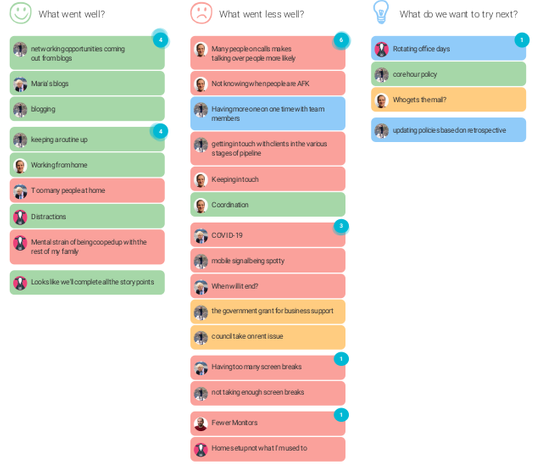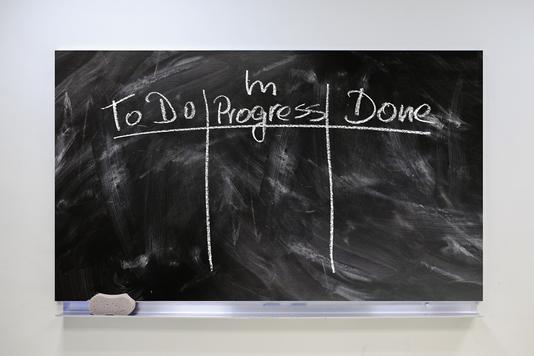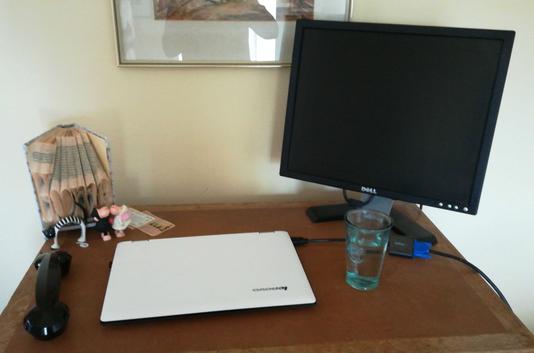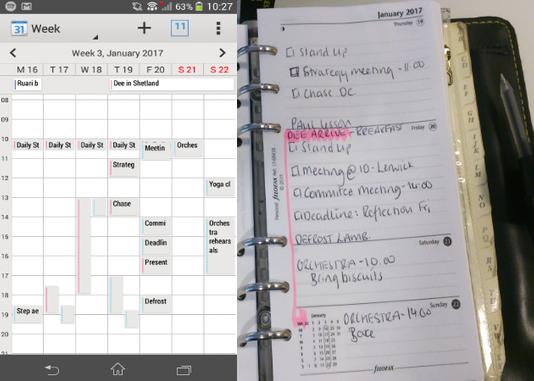
Looking Back Over Our First Week of Having a Fully Remote Team
- By Maria Bell
- 20 March
We're always looking at ways we can continuously improve our processes, so today we had a retrospective which focused on how this week has gone.
We showed the value of a retrospective during our last blog. Now it's time to find out how to have one of your own!

Part of the Remote Working series:
Part 1: The Mesomorphic Guide to Working From Home
Part 2: Communication When Working Remotely
Part 3: You Can With a Kanban
Part 4: Looking Back Over Our First Week of Having a Fully Remote Team
Part 5: The Mesomorphic Guide to Holding Your Own Retrospective
As promised, here is a blog post which covers the ins and outs of how we hold a retrospective at Mesomorphic.
If you haven’t read the blog post we published on Friday, then I suggest reading through that first so you can get a solid understanding of what the outcomes are for this process. As you now know, the outcome of a retrospective is to get a list of action points to be executed before the next retrospective. These action points help processes to be continuously improved, and by delegating action points to team members, it provides accountability within the team. Generally, the categories we use for retrospectives are:
For our retrospective on Friday however, we decided to reduce the number of categories and throw in a new one of “What do we want to try next”. That’s the beauty of retrospectives. You tailor the categories to suit your business/industry. The process is broadly the same, and you can get creative with your categories! Just don’t forget that the purpose of the exercise is to capture your wins as well as areas that need to be improved upon, so it’s important to include a “What went well” and “What didn’t go well” or a variety thereof. Once you have agreed on your categories, then you are ready to hold your first retrospective. If you’re all in the same space, post-it notes are great for capturing your thoughts. If you’re remote, it would be better to find an online tool which can be accessed by all your team. Before you start, you need to block off an appropriate amount of time to have your retrospective. This should be no longer than an hour.
Once you have the whole team together, start the session by reading out the prime directive
Regardless of what we discover, we understand and truly believe that everyone did the best job they could, given what they knew at the time, their skills and abilities, the resources available, and the situation at hand. — Norm Kerth
The prime directive makes sure that everyone is on the same page, and agrees that there is to be no finger pointing or blame culture. You all did the best you could at the time, so now is the time to revisit and review.
Each team member is to capture their individual thoughts and place under each category header. Remember, if you’re a team of one, you can still follow this process!
Each team member reads their ticket to the rest of the team, in case it needs clarification. This is a time for the rest of the team to be listening rather than speaking.
For 5 minutes, each individual group the tickets made in step 2 by theme. You’re not allowed to speak during this process, you’re simply to group tickets together. You generally have 5 minutes to carry out this task.
Once groups have been formed, the team decides together what the groups represent and gives them a suitable title.
Each team member votes on the groups they feel are most important. There are a number of different voting strategies available, but we’d recommend allowing one vote per group on as many groups as desired, to determine the most important group to the team.
Using the group that has been determined as the most important to the team, create action points and delegate as necessary. Creating action points from a single group allows the team to focus on a single objective to improve on before the next retrospective. This makes it more manageable and is easier to look back over at the next retrospective to determine if the team was successful or not. The other groups won’t be ignored, they will simply become the most important group in future retrospectives.
You will begin to see the value of retrospectives after your first run through. If you want to speak to us about this in more detail, please get in touch at contact@mesomorphic.co.uk

We're always looking at ways we can continuously improve our processes, so today we had a retrospective which focused on how this week has gone.

Task management is key for any organisation regardless of size and location. In this blog I will walk you through my own process for task management and look at how a Kanban board help keep tasks on track.

Keeping communication lines open can be an issue whether working remotely or in the same building. This blog looks at some of the tools availiable and how we achieve it in Mesomorphic.

Working from home is not uncommon in the IT industry, so here is a quick start guide to get started.

I'm going to be honest. Originally I had started writing this blog purely to discuss the benefits of using software in a business environment.